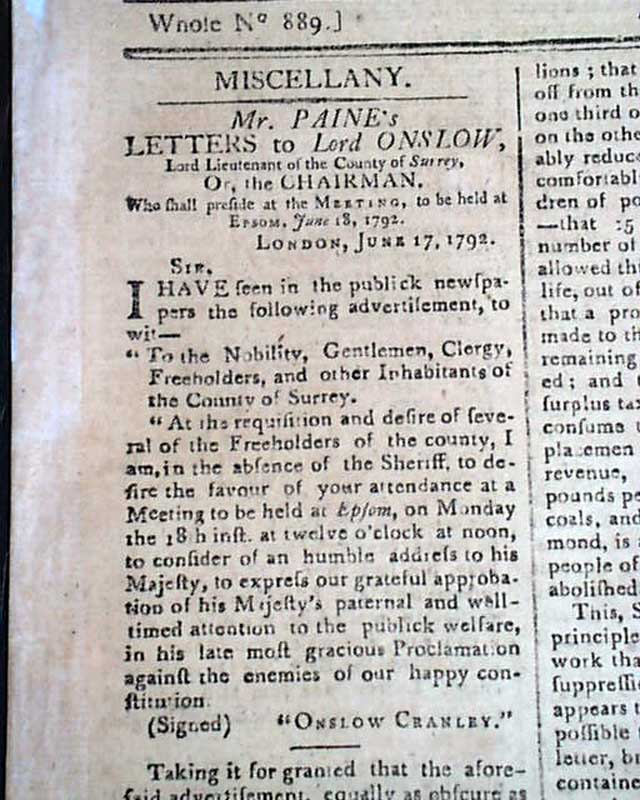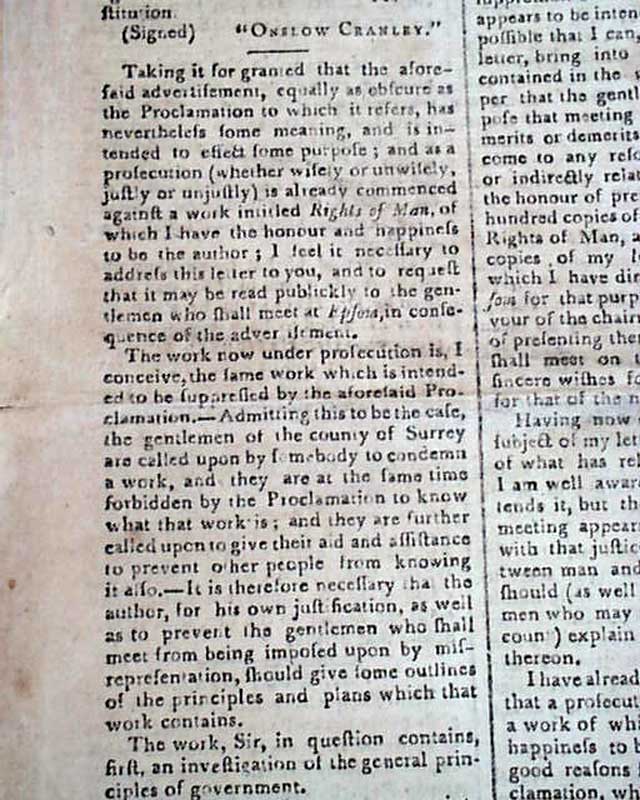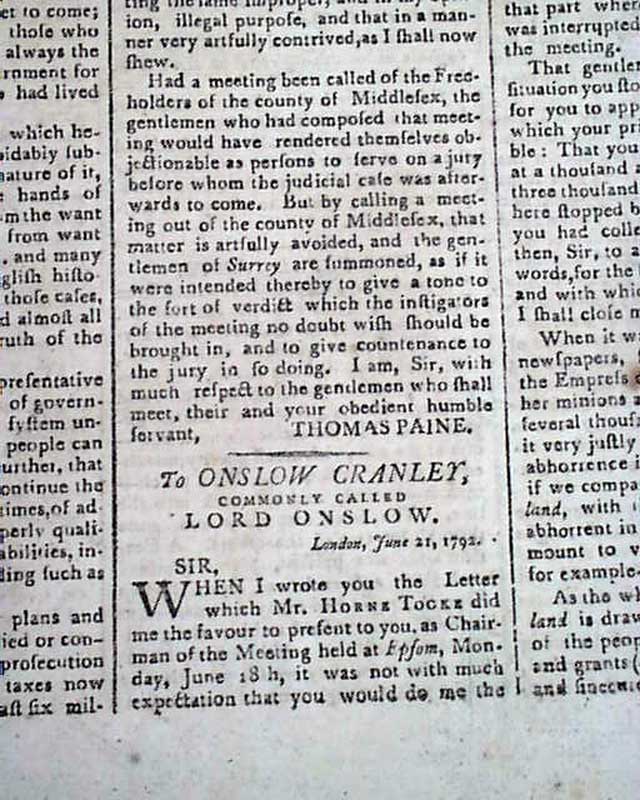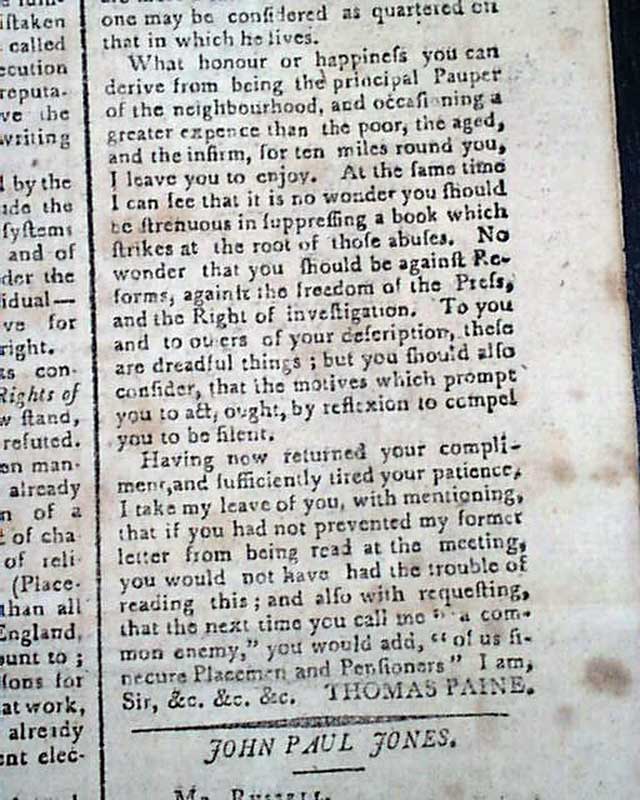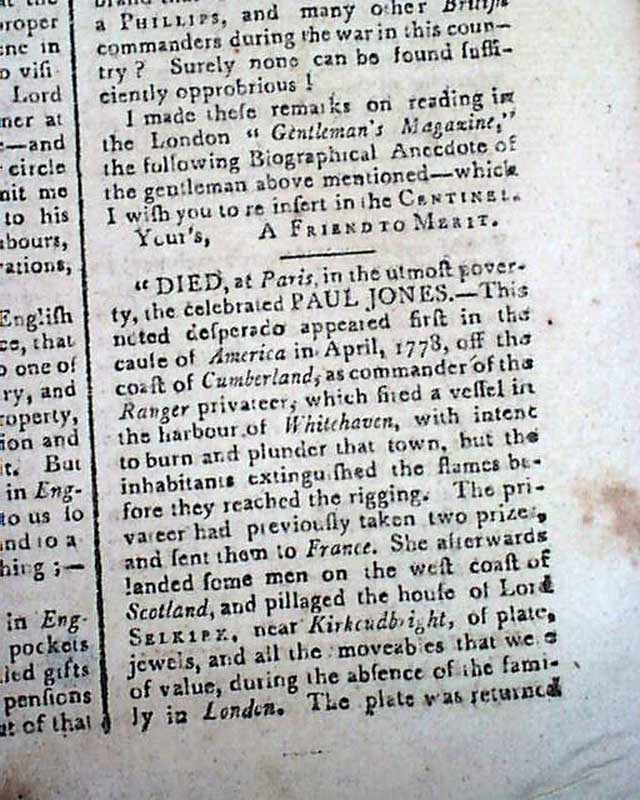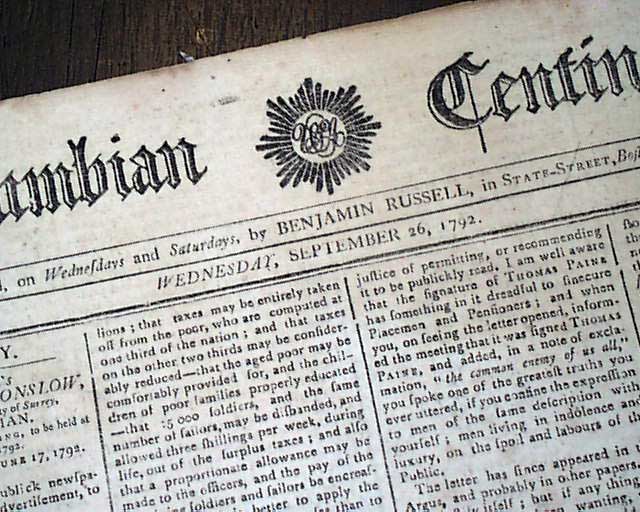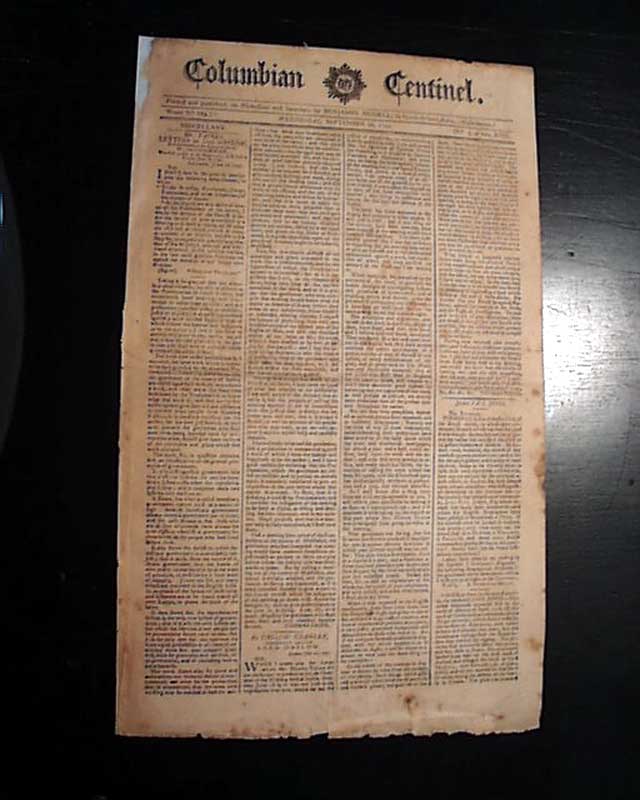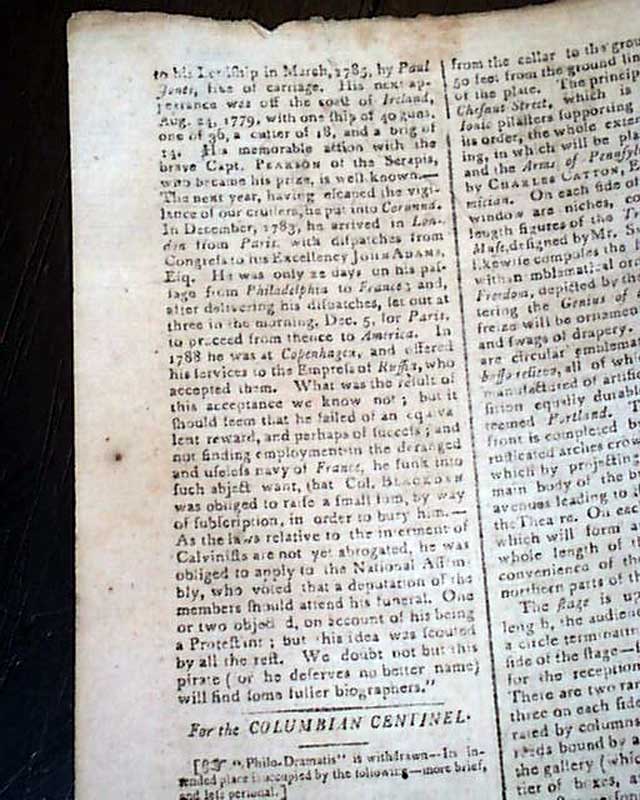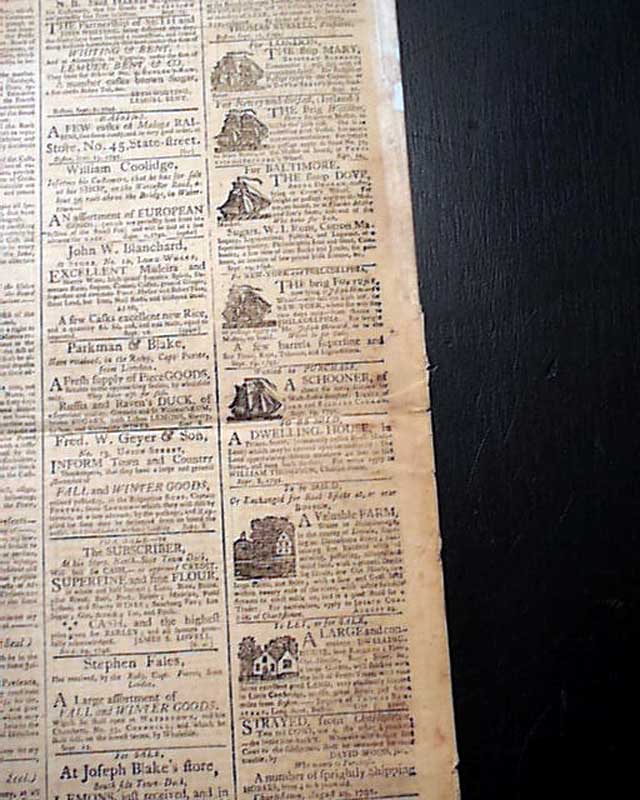Home >
Death of John Paul Jones & a letter by Thomas Paine...
Death of John Paul Jones & a letter by Thomas Paine...
Item # 703598
September 26, 1792
COLUMBIAN CENTINEL, Boston, Sept. 26, 1792
* John Paul Jones death - pirate ?
* Revolutionary War naval commander
* "Father of the American Navy
Most of the front page is taken up with "Mr. Paine's Letters to Lord Onslow" which has two of them, each signed in type: Thomas Paine.
The balance of the front page is taken up with an article headed: "John Paul Jones" which is a bit of a eulogy on him, including in part: "...that intrepid naval commander John Paul Jones...his English biographers have been pleased to denominate a Pirate..." and more.
Following this is an article which begins: "Died, at Paris, in the utmost poverty, the celebrated PAUL JONES--This noted desperado appeared first in the cause of America in April, 1778..." with more, carrying over to page 2 to take one-third of a column.
This appears to be just the second issue of the title & date we have been able to bring on the market in over 20 years.
Four pages, some archival repair to a blank portion of the spine, not affecting any type, nice condition.
background: John Paul Jones, the famed naval commander of the American Revolutionary War, died on July 18, 1792, in Paris at the age of 45, likely from interstitial nephritis, a kidney-related illness that had progressively weakened his health. Though once celebrated for his daring naval victories against the British—most famously the battle aboard the Bonhomme Richard, where he reportedly declared, “I have not yet begun to fight!”—Jones died in relative obscurity while living in France, having struggled to find a stable role after his service in Russia under Empress Catherine the Great ended contentiously. He was buried in a forgotten grave in the Saint Louis Cemetery for Protestants in Paris, his contributions largely overlooked for more than a century. In 1905, after an extensive search funded by the U.S. government and led by Ambassador Horace Porter, his remains were rediscovered, identified through forensic evidence, and ceremoniously returned to the United States. Jones was reinterred in 1913 with full military honors in a marble sarcophagus at the U.S. Naval Academy Chapel in Annapolis, Maryland, cementing his legacy as a foundational figure in American naval history.
Category: The 1600's and 1700's


